Blog (446 found)
Walking into Beatings, Running Away from Gunfire
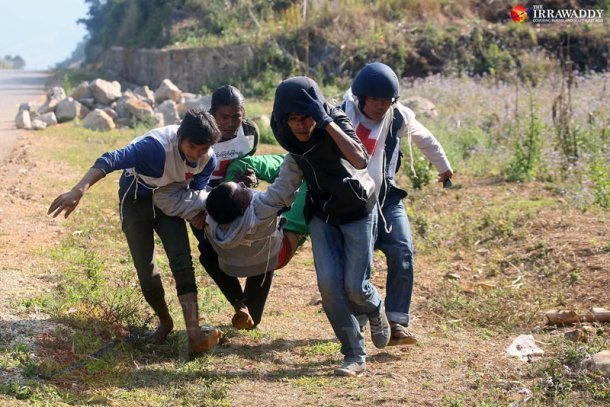 This week has seen the various organs of the state being employed to oppress and commit violence against students marching for education reform, workers striking for their rights, and ethnic nationality Kokang fleeing conflict. Thus we have seen the use of guns, thugs, repressive laws, and police brutality, exposing not just the range of the tools of government subjugation of its people, but the depths to which it will go to maintain power.
This week has seen the various organs of the state being employed to oppress and commit violence against students marching for education reform, workers striking for their rights, and ethnic nationality Kokang fleeing conflict. Thus we have seen the use of guns, thugs, repressive laws, and police brutality, exposing not just the range of the tools of government subjugation of its people, but the depths to which it will go to maintain power.
In downtown Rangoon on 5 March, 2015, around 200 people gathered to show their solidarity with the student marchers, currently barricaded by police in the town of Letpadan, 85 miles from Rangoon. This solidarity demonstration was violently broken up, not just by police, but by a gang of thugs, employed by the police to create disturbances and assault the protestors. These thugs, wearing red armbands with the word ‘duty’ are reminiscent of Swan Ah Shin group, who were used by the previous military regime in the Depayin Massacre in 2003 in which members of the National League for Democracy (NLD) were murdered, as well as the 2007 Saffron Revolution. Eight protestors were also detained overnight, including three members of the 88 Generation Peace and Open Society group. Meanwhile, the 100 students barricaded in Letpadan remain, with 500 police officers surrounding them, as the government refuses to allow them to continue their march to Rangoon.
• • •Another Wave of Industrial Action Threatens to Drown Burma’s Garment Industry
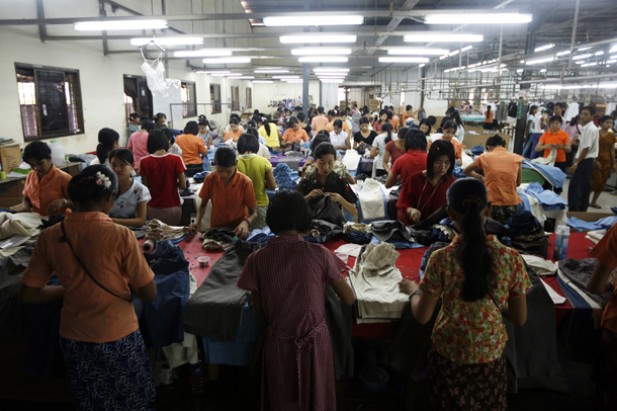 The month of February saw sustained and widespread industrial action at garment factories in Rangoon’s industrial zones, with thousands of striking workers demanding better pay and working conditions. Yet the authorities, along with influential private sector interests, have sought to quell the demonstrations without addressing the fundamental flaws in this burgeoning sector, resorting to force and underhand methods as they have done for decades.
The month of February saw sustained and widespread industrial action at garment factories in Rangoon’s industrial zones, with thousands of striking workers demanding better pay and working conditions. Yet the authorities, along with influential private sector interests, have sought to quell the demonstrations without addressing the fundamental flaws in this burgeoning sector, resorting to force and underhand methods as they have done for decades.
The main strikes occurred at E-Land Myanmar, Costec, Tai Yi, Red Stone and Ford Glory factories, located in Shwepyithar and Hlaingtharyar industrial zones. While there are variations in demands across the factories, one which was consistent among the strikers was a pay increase of 30,000 kyat ($30) per month. The average wage of a worker in a garment factory in Rangoon is around 80,000 ($80) per month. This is not a living wage and barely enough to survive, while a complex system of overtime and bonuses means that basic wages are extremely low, thus forcing workers to work an extra three hours per day, as well as on weekends, to make ends meet […]
• • •Land Policies and Laws Must Reflect Rights and Interests of Vulnerable Communities
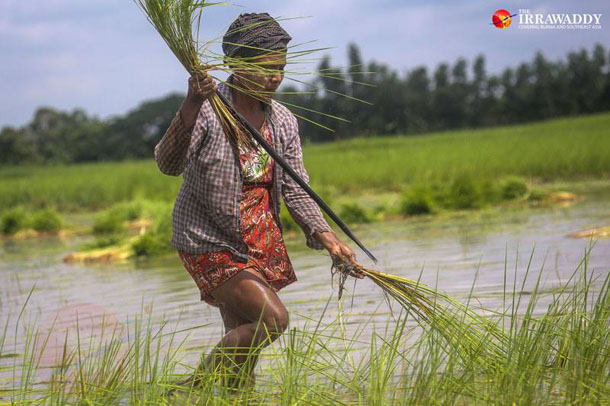 Amid the various serious issues currently dominating the headlines about Burma – including the upcoming elections, the escalation in fighting between the Burma Army and ethnic armies, the recent crackdown on workers’ protests, this year’s student marches, and ongoing religious tensions – it is important that people do not lose sight of the land issue. Like other developing South-East Asian countries, Burma is grappling with the sticky and complex problems of land ownership, rights and use. As is often the case, it is the poor and marginalized communities who are most vulnerable to exploitation and human rights abuses, particularly small-scale farmers in Burma’s beleaguered ethnic regions.
Amid the various serious issues currently dominating the headlines about Burma – including the upcoming elections, the escalation in fighting between the Burma Army and ethnic armies, the recent crackdown on workers’ protests, this year’s student marches, and ongoing religious tensions – it is important that people do not lose sight of the land issue. Like other developing South-East Asian countries, Burma is grappling with the sticky and complex problems of land ownership, rights and use. As is often the case, it is the poor and marginalized communities who are most vulnerable to exploitation and human rights abuses, particularly small-scale farmers in Burma’s beleaguered ethnic regions.
This month Human Rights Foundation of Monland-Burma (HURFOM) released a report titled “Yearning to be Heard: Mon Farmers’ Continued Struggle for Acknowledgement and Protection of their Rights” – a follow-up to their 2013 report “Disputed Territory: Mon Farmers’ Fight Against Unjust Land Acquisition and Barriers to Their Progress.” It argues that “continuing barriers to progress lie primarily in the country’s broken land management system, the failures of recent land laws to secure the protection of farmers’ land rights, the failure of government bodies and authorities to perform their responsibilities unbiased from military influence, and the total impunity of the military due to the independent structure of the courts-martial.” A salient example of such impunity, mentioned in the report, is the confiscation of more than 2,000 acres of rubber plantation in Thanbyuzayat Township, Mon State, over the past year. Regrettably, such land rights abuses betray the paltry extent to which the Burma Government is able to influence the Burma Army and rein in its illegal activities […]
• • •Yet another Derailment of the Burma Peace Train
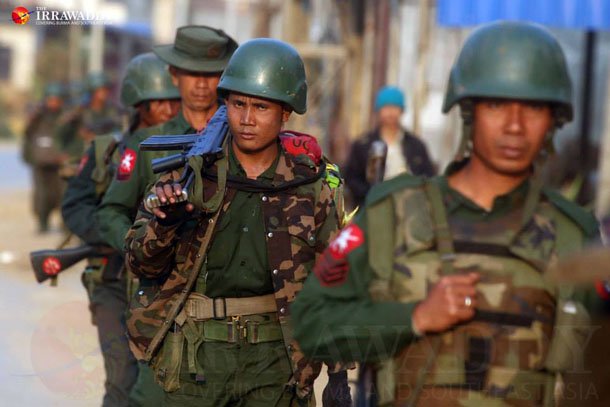 For anyone who believes that the peace process in Burma is making progress, the recent escalation and heavy fighting in northern Shan State and Kachin State, as well as the Union Day deed of commitment signing farce, only goes to show that faith in the ability and commitment of the Burma Government to secure a sustainable peace deal is misguided.
For anyone who believes that the peace process in Burma is making progress, the recent escalation and heavy fighting in northern Shan State and Kachin State, as well as the Union Day deed of commitment signing farce, only goes to show that faith in the ability and commitment of the Burma Government to secure a sustainable peace deal is misguided.
Union Day falls on 12 February, and is the anniversary of the Panglong Agreement signed between General Aung San, and Chin, Kachin and Shan ethnic leaders, an agreement that promised autonomy to the ethnic regions. It has been a reference point for ethnic nationalities ever since, and is symbolic of the possibility of a federal union within Burma whereby the rights of ethnic people are protected […]
• • •Meaningful Dialogue on the National Education Law is the Burma Government’s Obligation
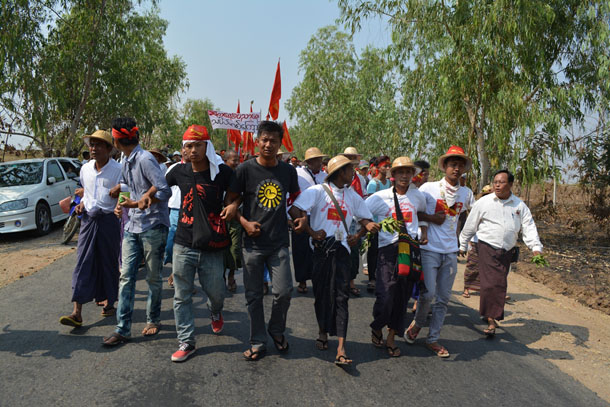 In last week’s blog, Burma Partnership examined Burma’s burgeoning student movement, shedding light on the authorities’ repressive response to the protests and setting the issue in the wider context of Burma’s hollow political reforms. This week has seen no let-up, with the students continuing to dominate the headlines as support for them increases and the pressure steadily builds.
In last week’s blog, Burma Partnership examined Burma’s burgeoning student movement, shedding light on the authorities’ repressive response to the protests and setting the issue in the wider context of Burma’s hollow political reforms. This week has seen no let-up, with the students continuing to dominate the headlines as support for them increases and the pressure steadily builds.
Of most concern to the Burma Government must be the fact that the protests are multiplying and spreading: no longer merely confined to Rangoon, the movement has seen students hailing from regions ranging from the Irrawaddy Delta to Tavoy in the southern Tenasserim Region join their fellow brothers and sisters in solidarity. Another significant development is that the ranks of the protest movement are swelling with those, such as monks, political activists and ordinary local residents from passing towns and villages, who want to declare their support […]
• • •In the Face of Government Intransigence, Burma’s Students March On
In Burma Partnership’s 2014 end-of-year review, we identified the role of student unions in Burma’s political affairs as one of the more notable and inspiring developments of 2014: “Burma’s students were always at the center of major democracy movements throughout history – most notably in 1988 – and have now made a comeback.” Furthermore, we declared that “it is the students that represent the greatest hope for the people of Burma – and the greatest threat to the Burma Government. It is vital that their progressive voice continues to be heard.” Indeed, these forecasts have been borne out, as January 2015 has seen the student movement go from strength to strength.
The underlying catalyst for this burgeoning student movement – and wider public support for it – is the overwhelming conclusion that Burma’s so-called reforms have now hit crisis point. Objections started with more “big picture” accusations that the political reforms initiated in 2011 have proven to be fake, accusations that are now crystallizing into fears that the national elections slated for later this year will be fixed, postponed or cancelled. More recently, students have honed in on specific issues, most notably education reform, land rights abuses, and violent responses to peaceful protests on the part of the authorities. […]
• • •More Murders, Same Patterns as Burma Army Acts with Impunity
 Yet another astonishing act of barbarity was committed by the Burma Army as two young ethnic Kachin teachers were raped and murdered in a village in northern Shan State. Unfortunately, this is not an isolated case as this incident once again demonstrates the impunity that protects the perpetrators of such cruel acts.
Yet another astonishing act of barbarity was committed by the Burma Army as two young ethnic Kachin teachers were raped and murdered in a village in northern Shan State. Unfortunately, this is not an isolated case as this incident once again demonstrates the impunity that protects the perpetrators of such cruel acts.
According to Kachin Women’s Association – Thailand, (KWAT) Burma Army troops had arrived in the village of Kawng Kha Shabuk, near the town of Muse, northern Shan State on the morning of 19 January 2015. They had previously been involved in military operations against the Kachin Independence Army (KIA). In the early hours of the morning, villagers heard screaming from the church compound where the two teachers were staying. They went to check but could not ascertain what had happened. The next morning, a neighbor went to the compound to find the two teachers dead with signs of sexual assault and of being viciously beaten. Boot marks were found nearby their living quarters. According to KWAT, “There is strong circumstantial evidence that the rape and killing was carried out by the Burma Army troops which had arrived on January 19. These troops were stationed on guard around the village, and no one else would have dared carry out these crimes with the soldiers present.” […]
• • •The Facts are Plain and Stated. It is Time to Act!
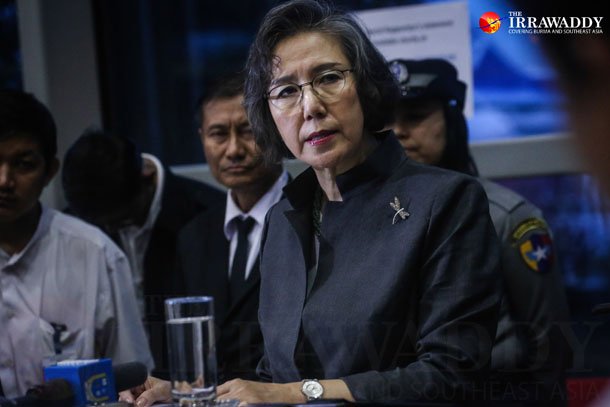 The US Special Envoy for Human Rights in Burma, US Assistant Secretary of State Tom Malinowski and his accompanying delegation, completed the second trip of this kind, highlighting the plethora of grave human rights concerns that continue to plague the people of Burma. On the same day, the UN Special Rapporteur on the situation of human rights in Burma, Yanghee Lee, also gave a stark analysis of progress in human rights.
The US Special Envoy for Human Rights in Burma, US Assistant Secretary of State Tom Malinowski and his accompanying delegation, completed the second trip of this kind, highlighting the plethora of grave human rights concerns that continue to plague the people of Burma. On the same day, the UN Special Rapporteur on the situation of human rights in Burma, Yanghee Lee, also gave a stark analysis of progress in human rights.
The two day, US-Myanmar Human Rights Dialogue visit included meetings with Union ministers in a closed door arrangement in Naypyidaw as well as meetings with civil society in Rangoon and Myitkyina, the capital of war-torn Kachin State. The 10-day trip of Special Rapporteur Yanghee Lee also included meetings with various government and civil society representatives, as well as visits to the site of the Letpadaung Copper Mine, Insein Prison, Arakan State, and Lashio, northern Shan State.
• • •Letpadaung Crisis Takes a Turn for the Worse
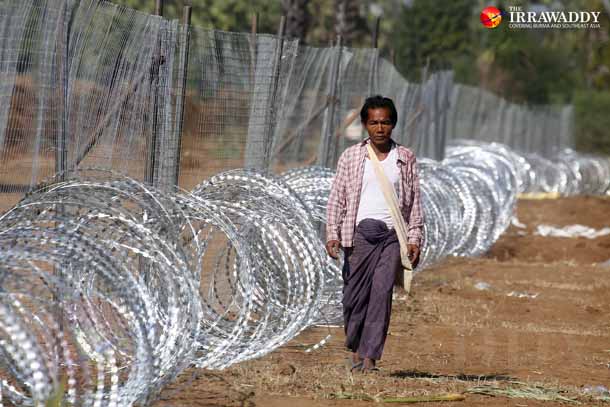 As 2014 ended seeing Burma’s reforms backsliding and the peace process stalling, Burma welcomed 2015 with many unresolved issues continuing to face people across the country.
As 2014 ended seeing Burma’s reforms backsliding and the peace process stalling, Burma welcomed 2015 with many unresolved issues continuing to face people across the country.
The ongoing dispute between local villagers and the Burma Government and Wanbao, a Chinese mining company, over land grabs and environmental damage continues to rumble on as police shot dead Daw Khin Win as she was demonstrating against the controversial Letpadaung mining project in Sagaing Region. Meanwhile, the police continue to arrest and detain activists who speak out against such violence on politically motivated charges, underlining the dire need for legal and judicial reform and the complete lack of the rule of law in Burma […]
• • •As 2014 Comes to an End, Students Hold Key to New Chapter in Burma Politics
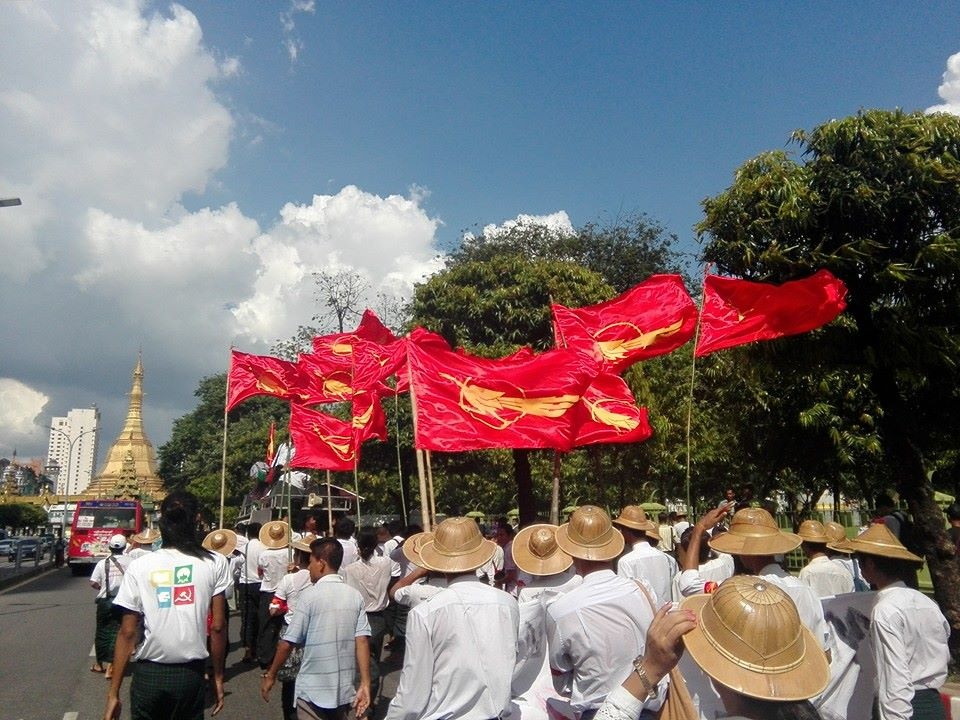 As we count down the remaining days of 2014, Burma Partnership takes a look back at what 2014 has offered. It has been nearly four years since President Thein Sein’s administration took office, and now is the time to digest all the developments during his presidency, to assess what the so-called reform process has really meant for the people of Burma thus far. And now is the time to properly examine this new political landscape and to determine who is who.
As we count down the remaining days of 2014, Burma Partnership takes a look back at what 2014 has offered. It has been nearly four years since President Thein Sein’s administration took office, and now is the time to digest all the developments during his presidency, to assess what the so-called reform process has really meant for the people of Burma thus far. And now is the time to properly examine this new political landscape and to determine who is who.
By the time the reforms were announced, everything was already set in motion to ensure that the reform process was controlled and manipulated by members of the old military regime. Looking at the notorious 2008 Constitution, the institutionalized prescription of 25 per cent of the seats in Parliament for military representatives, the dominance of the Union Solidarity and Development Party, the excessive power of the Burma Army and the National Defense and Security Council, and the growing investment of the State and affiliated business cronies in the media sector, it is not hard to conclude that a new system of repressive governance has been installed – by the same people who were once considered one of the most brutal and authoritarian regimes in the world.
However, it is important to remain hopeful. Although the new political landscape has contributed to the sophistication of old problems and the development of new problems, it has also offered Burma people new opportunities. One of the most inspiring aspects of the political developments in 2014 has been the reinstatement of the role of student unions in the country’s political affairs. Burma’s students were always at the center of major democracy movements throughout history – most notably in 1988 – and have now made a comeback. […]
• • •
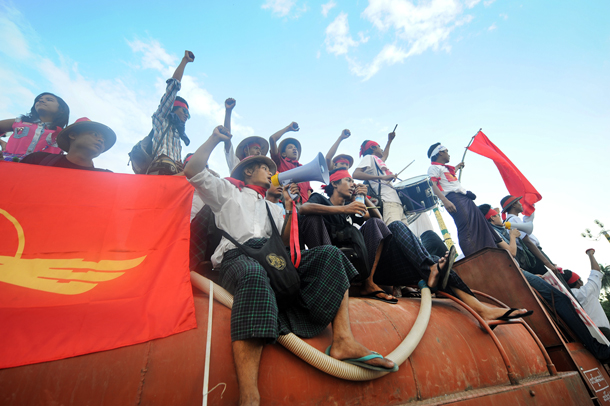








 All posts
All posts